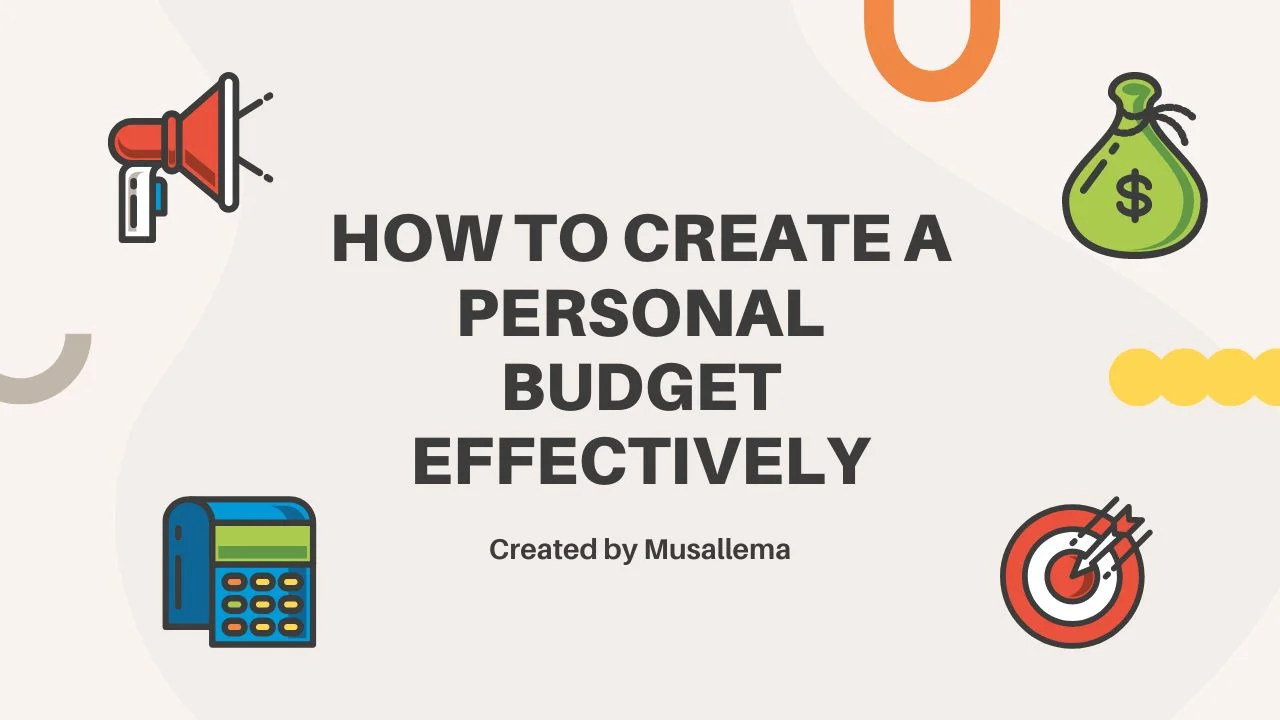Creating an effective personal budget is crucial for financial stability and achieving your financial goals. Whether you’re saving for a major purchase, paying off debt, or simply trying to manage your day-to-day expenses, a well-planned budget can help you take control of your finances. Here’s a step-by-step guide on how to create a personal budget that works for you.
1. Understand Your Income
Calculate Your Monthly Income: Start by determining your total monthly income. This includes your salary, bonuses, side income, and any other sources of regular earnings.
Track Irregular Income: If you have income that varies from month to month, calculate an average based on the past few months. This will give you a more accurate picture of your finances.
2. List Your Expenses
Fixed Expenses: Identify your fixed monthly expenses such as rent or mortgage payments, utilities, car payments, and insurance premiums. These are costs that remain the same each month.
Variable Expenses: Include variable expenses like groceries, entertainment, dining out, and transportation. These can fluctuate, so it’s essential to track them closely.
Unexpected Costs: Set aside a portion of your budget for unexpected expenses like car repairs or medical bills. Having an emergency fund can prevent these from derailing your budget.
3. Set Financial Goals
Short-Term Goals: These might include saving for a vacation, a new gadget, or paying off a credit card. Short-term goals typically have a timeline of a few months to a year.
Long-Term Goals: Long-term goals can include buying a home, saving for retirement, or your child’s education. These goals require a more extended timeline and consistent saving.
Prioritize Goals: Rank your goals by importance and allocate funds accordingly. This ensures that you’re working towards what matters most to you.
4. Create the Budget
Budget Categories: Divide your expenses into categories, such as housing, transportation, food, entertainment, and savings. This helps you see where your money is going.
Allocate Funds: Assign a portion of your income to each category based on your spending patterns and financial goals. Ensure your expenses do not exceed your income.
50/30/20 Rule: Consider using the 50/30/20 budgeting rule where 50% of your income goes to necessities, 30% to wants, and 20% to savings and debt repayment.
5. Track Your Spending
Use Budgeting Tools: Leverage budgeting apps or spreadsheets to track your spending. Tools like Mint or YNAB can sync with your bank accounts, making it easier to monitor your finances in real time.
Review Regularly: Consistently review your budget at the end of each month to see how well you stuck to it. This helps you identify areas where you may need to adjust your spending.
6. Adjust as Necessary
Make Changes: If you find that certain budget categories are consistently over or under-spent, adjust your budget. Flexibility is key to maintaining a successful budget.
Increase Savings: As your income grows, aim to increase the amount you save each month. This will help you reach your financial goals faster.
7. Stay Disciplined
Avoid Impulse Purchases: Stick to your budget by avoiding unnecessary spending. Consider whether a purchase aligns with your financial goals before making it.
Automate Savings: Set up automatic transfers to your savings account to ensure you consistently save a portion of your income.
8. Plan for the Future
Review Annually: Reevaluate your budget at least once a year, or whenever there’s a significant change in your financial situation, like a new job or major life event.
Prepare for Big Expenses: If you know you have a significant expense coming up, start setting aside money now to cover it without disrupting your budget.
By following these steps, you can create a personal budget that helps you manage your money effectively and achieve your financial goals. A well-structured budget is an essential tool in maintaining financial health and ensuring long-term success.









